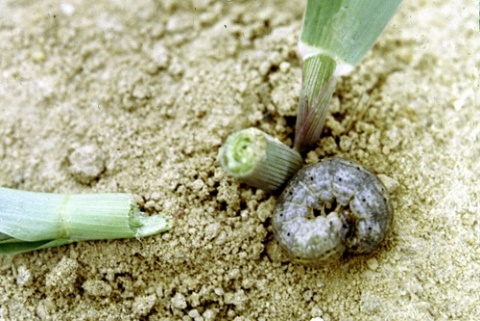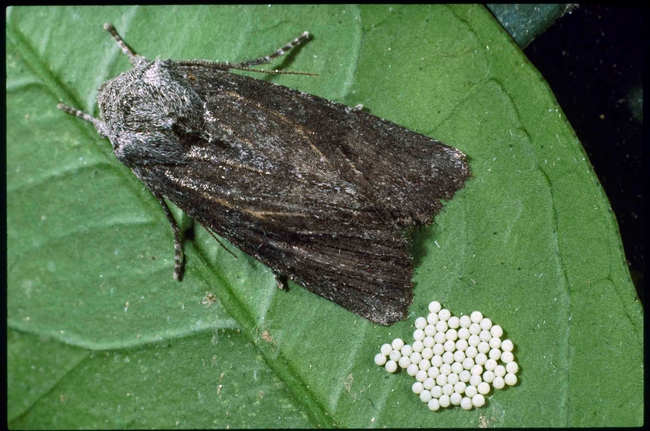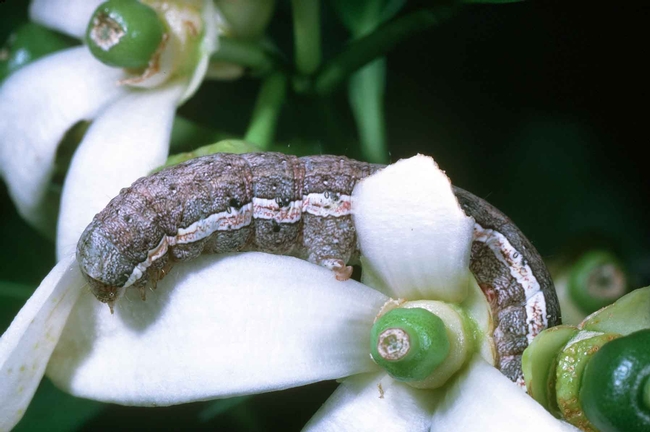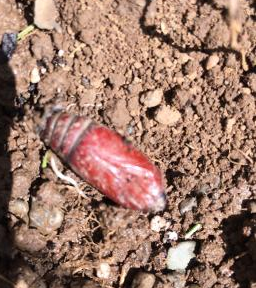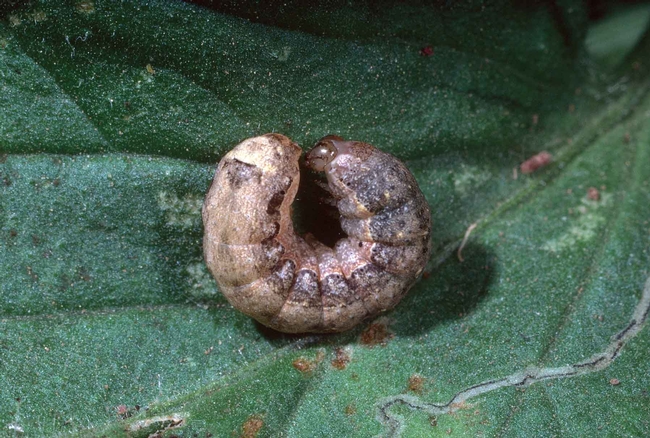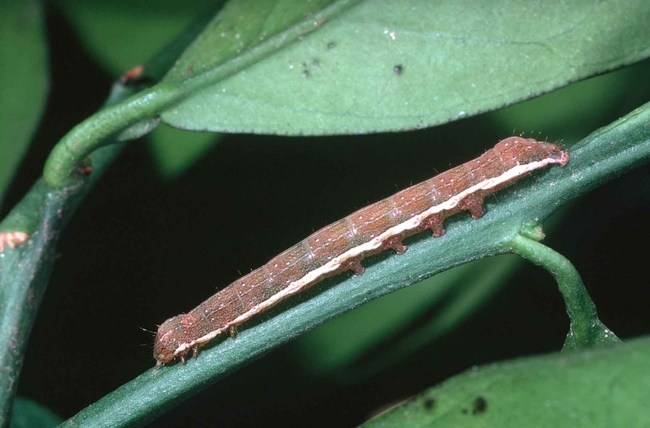Cutworms are moth larvae that hide in the soil during the day, and then come out at night to feed on plants. They get their name from their ability to "cut off" a seedling at ground level by chewing through the stem at or just below the soil level. The larvae of many species of adult moths are called cutworms, although they are actually caterpillars, not worms. They do not bite or sting; if disturbed, they will roll up into a c-shape. While they are not harmful to humans, they can be a major problem in the garden.
Citrus cutworm moth and eggs, Jack Kelly Clark, UC ANR
Cutworms are grouped into 3 general categories:
1) Surface cutworms: do considerable damage to leaves and stems.
2) Climbing cutworms: climb onto plants and eat buds, leaves, and fruit.
3) Subterranean cutworms: stay on or below ground and feed on the roots of plants.
Larva of citrus cutworm. Jack Kelly Clark, UC ANR
Cutworm pupae, Michelle Ramsey
Management and Control. Plant collars can be used to protect tender transplants, because cutworms need to completely encircle a stem in order to munch it off. Make a collar out of cardboard, plastic, or aluminum foil. Paper cups (with bottoms removed) or tin cans (with both ends removed), also make good collars to place over young plants. Place a collar around each stem extending it one to two inches into the soil and two to three inches above the soil.Cutworm, Jack Kelly Clark, UC ANR
- Control weeds, grasses and plant debris both in and around the garden to reduce habitat and food favored by young cutworms.
- Keep up with cultivation. Moths prefer to lay eggs in high grass and weeds. At the end of the season, till your garden and mow surrounding areas to destroy their over-wintering habitat.
- A few weeks before planting your garden, dig the soil down about two inches, and squash any caterpillar larvae and/or pupae you find manually (or drop them into a bucket of soapy water).
- Once larvae emerge from pupae, hand-picking at night with a flashlight is very effective. Clip and dispose of infested foliage and blossoms.
- Pesticides are not very effective and can harm beneficial insects, so they are not recommended.
Larva of citrus cutworm, Jack Kelly Clark. UC ANR
Additional information on cutworm damage on fruits and vegetables can be found here on the UC IPM website.
The UC Master Gardeners of Butte County are part of the University of California Cooperative Extension (UCCE) system. To learn more about us and our upcoming events, and for help with gardening in our area, visit our website. If you have a gardening question or problem, call the Hotline at (530) 538-7201 or email mgbutte@ucanr.edu.
